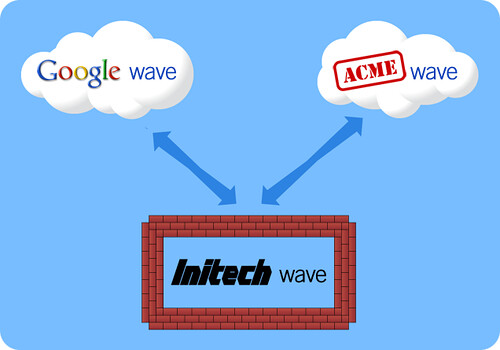 Google has announced a new technology that is arguably the boldest invention and most innovative idea to come out in recent years for the Internet (full announcement here).
Google has announced a new technology that is arguably the boldest invention and most innovative idea to come out in recent years for the Internet (full announcement here).
It has the potential to replace email, instant messenging, and create a new technical category for collaboration and interactivity in the broadest sense. However hidden in the details, is a dirty little secret about the practicality of this project.
Google Wave is transformative, but it also is a technical challenge. If adopted, it will entrench cloud computing and ultimately Google’s fate as the most dominant company in the world.
The challenge in its development
For the last two years, the Google Sydney office has been working on a “secret project”. It got to the stage where the office – which runs the Google Maps product (another Sydney invention) – was competing for resources and had half the office dedicated to developing it. So secret was the project, that only the highest level of Google’s management team in Mountain View knew about it. Googler’s in other parts of the world either didn’t know about it, or people like me in the local tech scene, knew it was something big but didn’t know what exactly.
However although I didn’t know what exactly it was, I was aware of the challenge. And basically, it boils down to this: it’s a difficult engineering feat to pull off. The real time collaboration, which is at the core of what this technology provides, requires computationally a huge amount of resources for it to work.
It needs everyone to use it
Although we are all digging into the details, one thing I know for a fact, is that Google wants to make this as open as possible. It wants competitors like Microsoft, Yahoo and the entire development community to not just use it – but be a big driver in its adoption. For collaboration to work, you need people – and it makes little sense to restrict it to only a segment of the Internet population (much the same like email). Google’s openness isn’t being driven out of charity, but pure economic sense: it needs broad-based market adoption for this to work.
Only few can do it
However, with lots of people using it comes another fact: only those with massive cloud computing capabilities will be able to do this. Google practically invented and popularised the most important trend in computing right now. A trend where the industrial age’s economies of scale has come to play – reminding us that there are aspects of the Information Economy that are not entirely different from the past. What Google’s Wave technology does, is give a practical application that relies on cloud computing for its execution. And if the Wave protocol becomes as ubiquitous as email and Instant Messaging – and goes further to become core to global communications – then we will see the final innings to who now runs this world.
Wave is an amazing technology, and I am excited to see it evolve. But mark my words: this open technology requires a very expensive setup behind the scenes. And those that will meet this setup, will be our masters of tomorrow. Google has come to own us due to its innovation in information management – now watch Act II as it does the same for communications.

